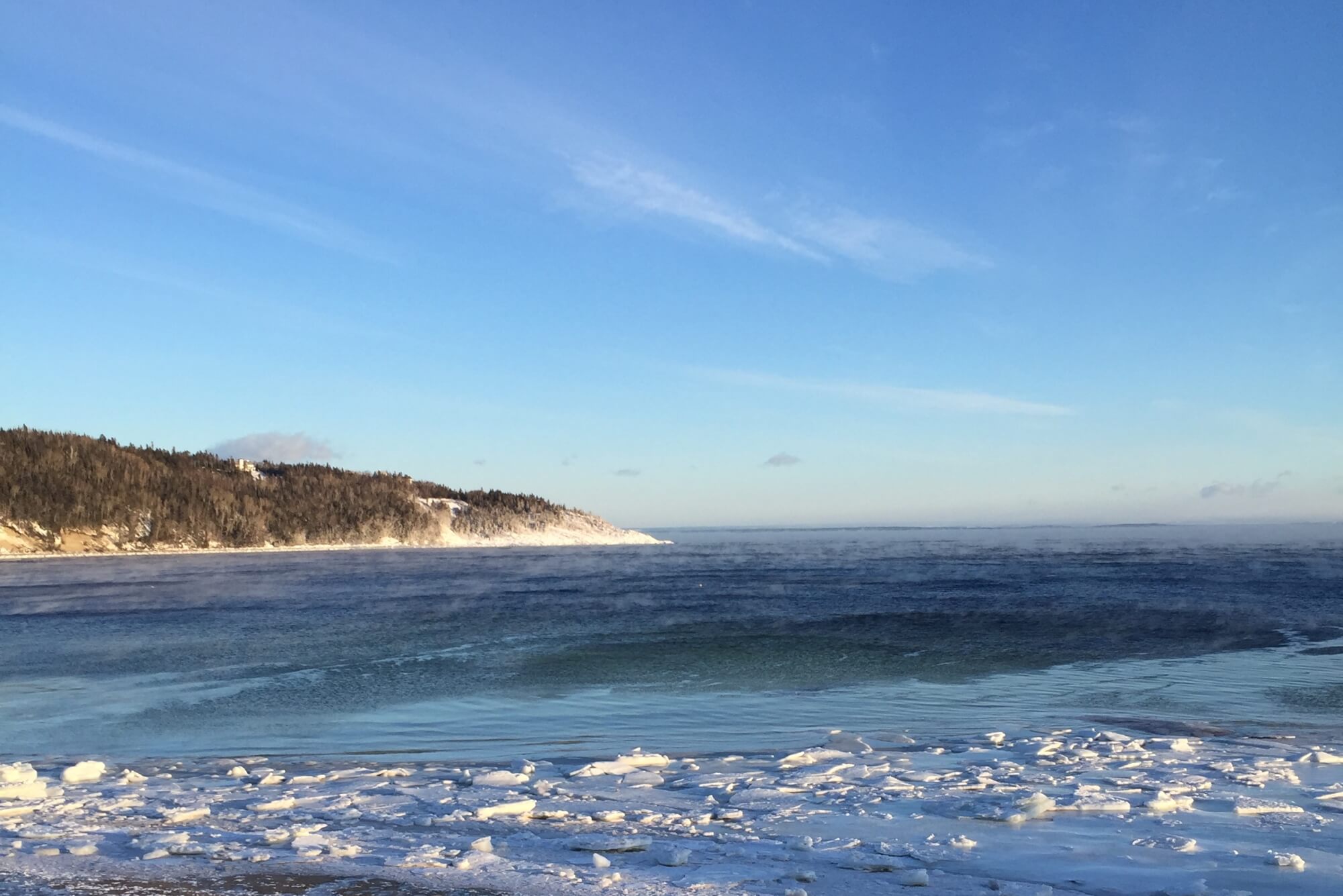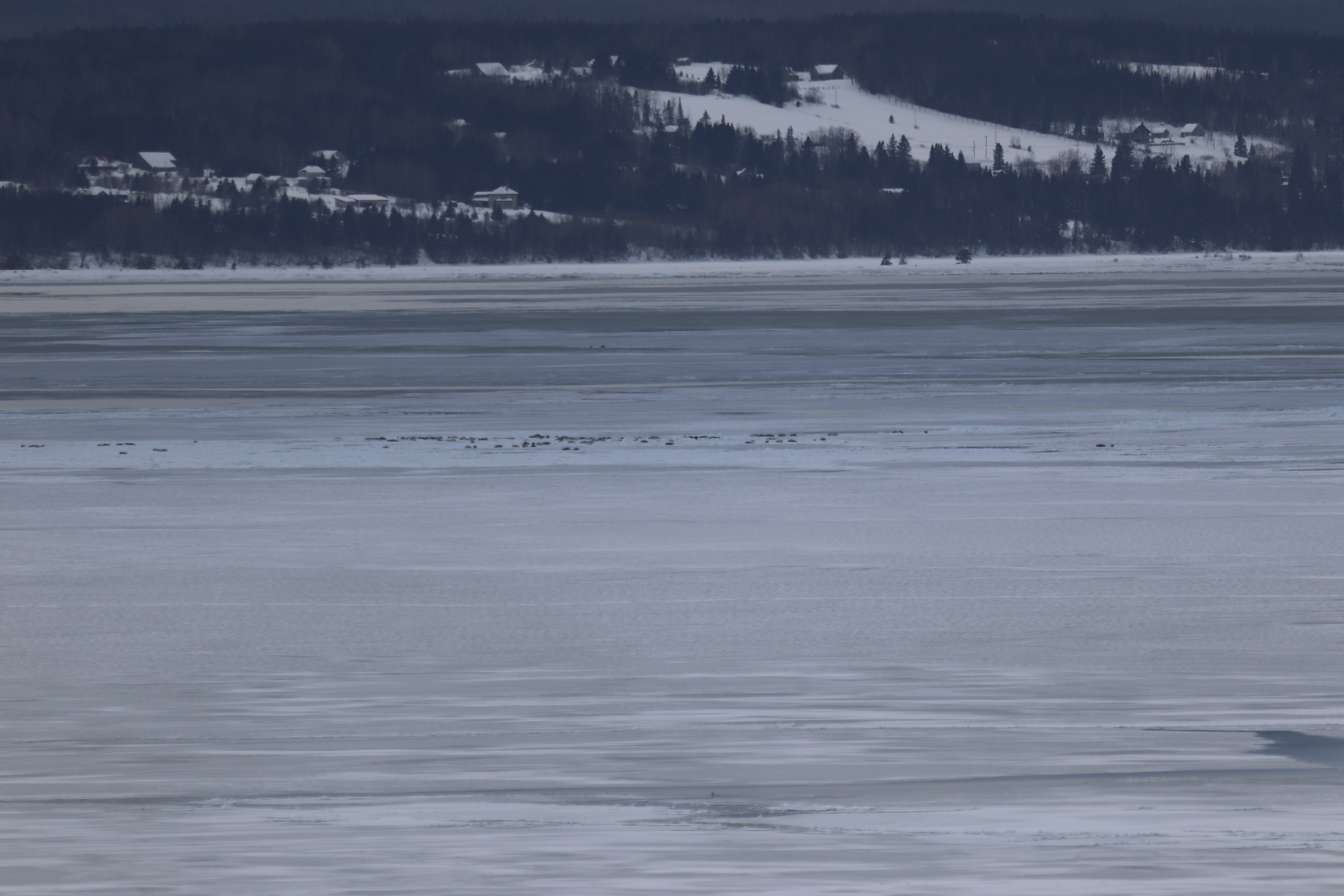Despite the arctic temperatures of the past week, the marine animals of the St. Lawrence do not seem to have been overly affected! Although the larger cetacean species appear to have moved farther offshore, pinnipeds and seabirds continue to hang tough and delight observers who brave the cold to see them.
Catching a few rays
Near Cap-aux-Os in the Gaspé region, a hundred or so seals were resting on the pack ice. “These are harbour seals, but it looks like there might be a few harp seals,” said one lucky observer who got out her binoculars for the occasion.
On the other side of the St. Lawrence, in the Mingan sector, a large number of seabirds and six or seven harp seals have also been seen offshore in the past few days. The pinnipeds were scattered over the little ice currently floating in the gulf. “These aren’t the winters we’re used to,” says a local ecologist regarding the ice cover, which has been growing increasingly scarce for some time now.
On the other hand, near Franquelin, the ice seems to have taken hold; it is present as far as the eye can see, and no marine mammal has been observed of late, reports one local resident.
Farther west, at Cap de Bon-Désir, the three species of St. Lawrence seals were identified on Wednesday morning. More precisely, about ten harp seals, two harbour seals and a solitary grey seal were present. This grey seal is “perhaps the same one that’s been observed since last fall,” surmises a regular visitor to this site, who has observed a similar individual on multiple occasions in recent months. That same day, a small harbour seal was seen near Les Escoumins.
At the mouth of the Saguenay Fjord, two pinnipeds were swimming quietly on Sunday morning and in Saint-Siméon, two more individuals were seen. However, it’s difficult to say exactly which species they were, as the glare of the sun made identification almost impossible!
Not even afraid of the cold!
The brave souls who have ventured out in the past few days may have been surprised by the outside temperatures. Even bundled up, it was still rather chilly! In Tadoussac, a raft of a hundred or so American black ducks was quietly dabbling in the icy water over the weekend and even the seals, with just their heads sticking out of the water, seemed quite comfortable swimming in this frigid weather. Even if they lack warm clothes, they look more comfortable than us humans in these extreme temperatures. But how do they do it?
Like humans, seals are warm-blooded mammals that must maintain their internal temperature at around 37°C. They have therefore developed a very useful adaptation that allows them to stay in the water even when the temperatures are rather low: thermoregulation.
Heat exchanges occur between the arteries and veins and allow the animal to regulate its body temperature. The cooler blood flowing through the veins will be warmed by the blood in the arteries. This countercurrent heat exchange system is called the rete mirabile (article in French), which translates as “wonderful net,” and limits heat loss in the extremities. A significant layer of fat and the hair on the seals’ skin surface also help protect them from the cold.
Birds, in addition to their plumage that keeps them well insulated, also have a similar system to retain heat. Additionally, they are believed to have an antifreeze protein in their feet to prevent them from freezing. Fascinating, isn’t it?
Share your observations!
Have you seen any marine mammals in the St. Lawrence? Whether it’s a spout offshore or just a couple of seals, drop us a line and send your photos to [email protected]!







